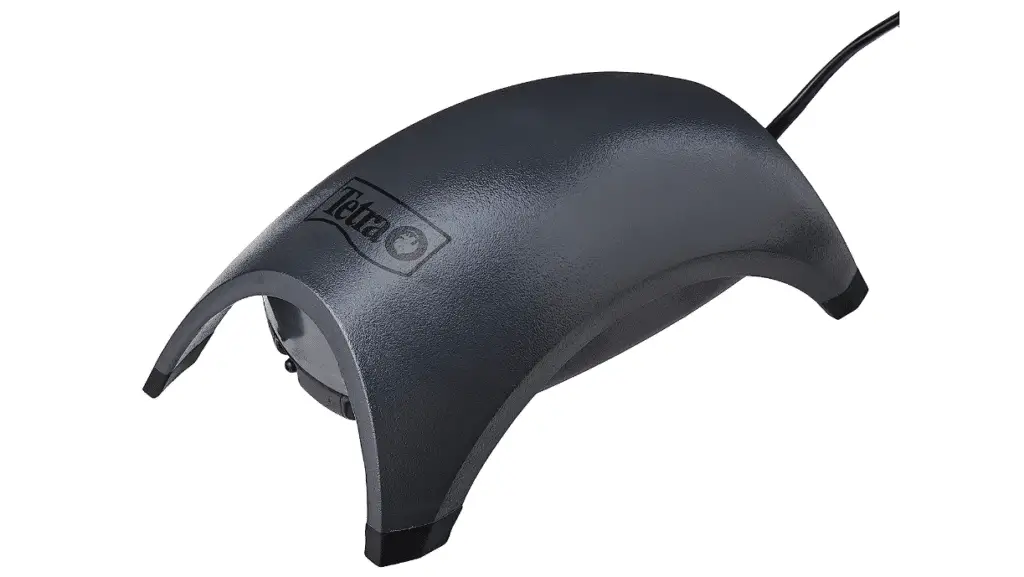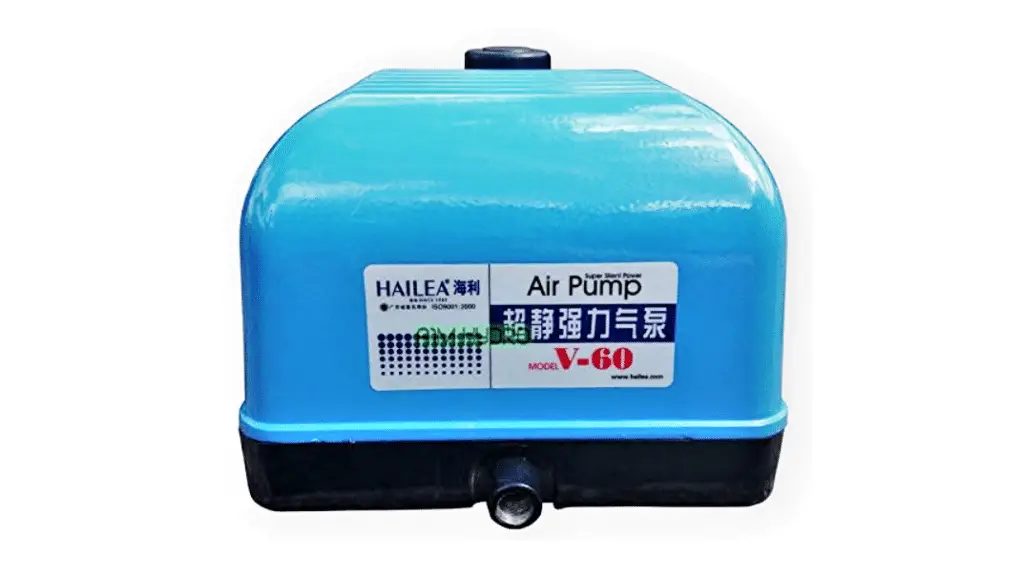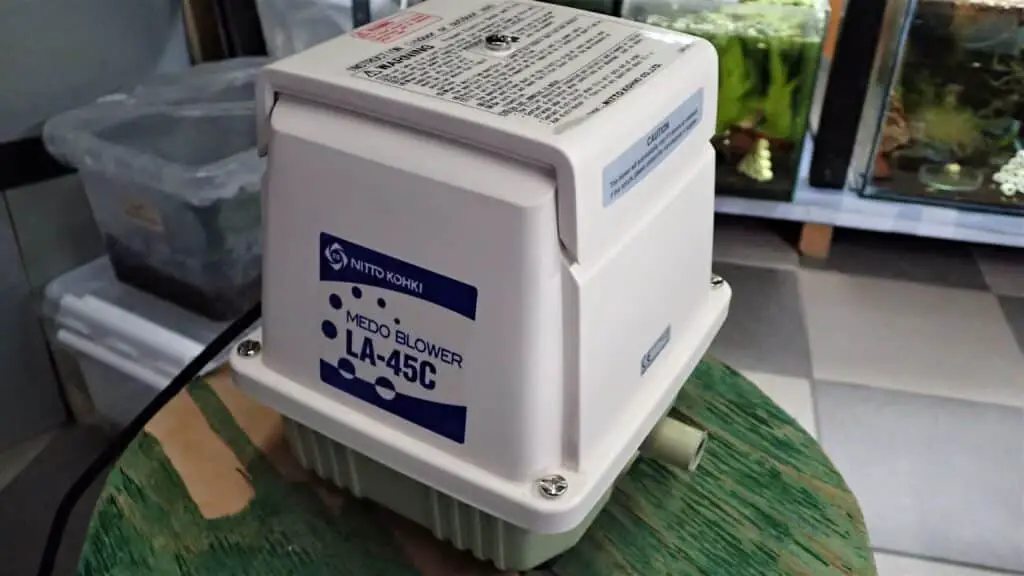Introduction:
Welcome to my page on aquarium air pumps! If you’re an aquarium enthusiast like me, you know how important it is to maintain a healthy and oxygen-rich environment for your pet fish and other aquatic creatures like shrimp. That’s where air pumps come in – they provide vital aeration to your aquarium and ensure that your aquatic pets have enough oxygen to breathe.
In this guide, I’ll be sharing my personal experiences with different types of aquarium air pumps and recommending specific models that I have used and trust. I believe in being honest and transparent about my recommendations, so I will only be recommending air pumps that I have actually used and tested myself.
Whether you’re a seasoned aquarium hobbyist or just getting started with your first tank, my goal is to help you choose the right air pump for your fish tank. So, let’s dive in!
for your fish tank. So, let’s dive in!
Using aquarium air pumps in my Shrimp Room:
In my shrimp room, I rely on air pumps to power my sponge filters, which are a foolproof option for keeping my shrimp safe and healthy. Sponge filters work by providing mechanical and biological filtration through a sponge that traps debris and provides surface area for beneficial bacteria to colonize.
Unlike other types of filters, sponge filters have no moving parts, making them an excellent option for situations where power outages or equipment failures can occur.
Overall, using air pumps to power sponge filters in my shrimp room has been a reliable and effective way to maintain a healthy and stable environment for my aquatic pets. If you’re looking for a low-maintenance and foolproof filtration option for your aquarium, I highly recommend giving sponge filters a try.

Types of aquarium air pump
There are two main types of aquarium air pumps – diaphragm pumps and piston pumps.
Diaphragm pumps work by using a flexible rubber diaphragm to create air pressure that pushes air out of the pump. These pumps are typically less expensive than piston pumps and are a good choice for small to medium-sized aquariums. They are also relatively quiet and energy-efficient.
Linear Piston pumps, on the other hand, use a piston and cylinder to compress air and create pressure. These pumps are generally more expensive than diaphragm pumps but can provide more substantial and steady airflow. They are a good choice for larger aquariums or if you have a lot of air-driven equipment that requires strong airflow.
When choosing between diaphragm and piston pumps, consider the size of your aquarium and the amount of air-driven equipment you have.
Diaphragm pumps are usually sufficient for smaller tanks, while piston pumps are better suited for larger tanks or heavy-duty equipment.
My recommended air pumps

TetraTec Air Pumps
TetraTec air pumps are a great choice for aquarium hobbyists on a budget. These small diaphragm pumps are affordable and reliable, providing consistent airflow to your aquarium. They are available in a range of sizes to suit different tank sizes and equipment needs.
In my experience, TetraTec air pumps are easy to set up and operate, and they have performed well in my aquariums. One potential downside is that they can be a bit noisy compared to more expensive pumps, but this may not be a major concern for all users.
These smaller pumps are good for one or two tanks up to multiple tanks for the larger pumps.
Tetra Tech Air Pump Prices on Amazon
Tetra APS100
Tetra APS150
Tetra APS400

Hailea V-Range Air Pumps
Hailea V-range air pumps are a mid-range option that offers more power and durability than budget options. These piston pumps are available in various sizes and are designed to be energy-efficient and quiet.
I have found that Hailea V-range air pumps provide strong and consistent airflow to my aquarium, and they are easy to maintain. One potential drawback is that they are more expensive than budget options, but you get more air.
These pumps are designed to produce enough air for a small fish room.
Hailea V-range air pump prices on Amazon
Hailea V-10
Hailea V-20
Hailea V-60

Medo Linear Piston Air Pump
The Medo linear piston air pump is a high-end option that is designed for heavy-duty use in large aquariums or commercial settings. This piston pump is built to last, with durable construction and a long lifespan.
This type of pump is also silent compared to the rubber diaphragm types.
It provides powerful and consistent airflow, making it a good choice for users with a lot of air-driven equipment or a large aquarium. However, it is also the most expensive option on this list, so it may not be suitable for all users.
This type of pump is designed for large fish rooms, hydroponics and septic tanks.
Medo linear piston air pump prices on Amazon.
Medo LA-80
This is not the full range, but it is all I could find as of writing this post, I will update it when I can.

Choosing the right size air pump for your Aquariums
When choosing an air pump for your aquarium, it’s important to select the right size to ensure that your aquatic pets have enough oxygen to breathe. Here are some factors to consider when choosing the right size air pump:
- Aquarium size: The size of your aquarium will determine the amount of air circulation that is needed. A good rule of thumb is to choose an air pump that can deliver at least one liter of air per minute for every 40 liters of water in your tank.
- Number of fish: The more fish you have in your aquarium, the more oxygen is required to keep them healthy. As a general guideline, you should choose an air pump that can deliver enough air to create visible surface agitation in your tank.
- Equipment connected to the air pump: If you have air-driven equipment such as an air stone, air-powered filters, or air-powered ornaments, you will need to factor in their air requirements when choosing an air pump. Make sure to choose an air pump that can deliver enough air to power all of your equipment without putting too much strain on the pump.
- Personal preference: Keep in mind that the amount of air flow in your aquarium can affect the overall aesthetic and sound of your tank. Some people prefer a more tranquil and quiet tank, while others like the sound of bubbling water. Consider your personal preferences when selecting the right size air pump for your aquarium.
By taking these factors into account, you should be able to select an air pump that delivers the right amount of oxygen and air flow for your aquarium, keeping your aquatic pets healthy and happy.
Importance of having a backup pump!
Don’t get caught out, In addition to selecting the right air pump for your aquarium, it’s also essential to have a backup pump on hand. A backup pump can be a lifesaver in the event of a pump failure, which can occur due to power outages, mechanical malfunctions, or other issues. If your air pump fails, the oxygen levels in your aquarium can quickly drop, putting your aquatic pets at risk.
Having a backup pump ensures that you have a backup source of oxygen and water circulation in case of a pump failure. It’s recommended to have a backup pump that is of similar size and strength to your primary pump, so that it can provide adequate oxygen and water circulation in case of an emergency.
Make sure to test your backup pump periodically to ensure that it is in working condition and to familiarize yourself with the setup process in case of an emergency. By having a backup pump on hand, you can ensure the safety and well-being of your aquatic pets in case of a pump failure.

Aquarium Air Pump Accessories
In addition to selecting the right air pump for your aquariums, there are a variety of accessories and supplies available that can help you customize the performance and functionality of your air pump. Here are some common aquarium air pump accessories:
- Airline tubing: Airline tubing is used to connect your air pump to your air-driven equipment, such as air stones, sponge filters, and ornaments. It’s important to choose the right diameter of airline tubing for your air pump and equipment to ensure adequate airflow.
- Check valves: Check valves are important accessories that prevent water from siphoning back into your air pump in case of a power outage or other interruption. Check valves are typically installed in the airline tubing between the air pump and the equipment.
- Flow valves: Flow valves are used to adjust the amount of air flow that is provided to your air-driven equipment. This can be helpful for fine-tuning the performance of your equipment or reducing noise levels.
- Air stones: Air stones are used to create a fine stream of bubbles that increase the surface area of the water exposed to air, which can help to oxygenate the water and prevent stagnant areas. Air stones come in a variety of shapes and sizes, and can be used with or without other air-driven equipment.
- Sponge filters: Sponge filters are a type of filter that provides mechanical and biological filtration through a sponge that traps debris and provides surface area for beneficial bacteria to colonize. Sponge filters are typically powered by air pumps, and can be customized with different types of sponge media for different levels of filtration.
Conclusion
Selecting the right aquarium air pump is crucial for maintaining a healthy and oxygen-rich environment for your aquatic pets. With so many air pumps on the market, it can be difficult to choose the right one for your aquarium. That’s why we’ve provided our top picks for the best aquarium air pumps in 2023, along with a guide on how to choose the right one for your aquarium size and equipment needs.
Whether you’re looking for a budget-friendly option or a heavy-duty air pump for larger aquariums, our recommendations have got you covered. And, if you purchase through our affiliate links, you can support our page while getting the best deals on high-quality aquarium air pumps.
Don’t compromise on the health and well-being of your aquatic pets by using the wrong air pump. Invest in the best aquarium air pump that suits your needs, and enjoy the benefits of a well-aerated and healthy aquarium.
FAQ
Q: Do I need an air pump for my aquarium? A: Yes, air pumps are an important part of maintaining a healthy and oxygen-rich environment for your aquatic pets. They help to circulate water and provide oxygen to your fish and other creatures in the aquarium.
Q: How often should I run my aquarium air pump? A: It’s recommended to run your air pump continuously to maintain a consistent oxygen supply in your aquarium. However, if you have a lot of air-driven equipment, you may need to adjust the flow rate or run the air pump on a timer to avoid over-oxygenation.
Q: Are air pumps noisy? A: Diaphragm pumps tend to be louder than piston pumps, but noise levels can vary depending on the brand and model. Look for air pumps with noise-reducing features, such as rubber feet or sound-dampening materials.
Q: How do I know if my air pump is working properly? A: You should see bubbles rising to the surface of your aquarium if your air pump is working properly. If you don’t see any bubbles, check the air tubing and air stone for blockages or leaks.
Q: Can I use an air pump with a saltwater aquarium? A: Yes, air pumps can be used with saltwater aquariums. However, make sure to use an air pump that is designed for marine environments, as saltwater can be corrosive to some types of air pumps.
Q: How do I clean my air pump? A: Refer to the manufacturer’s instructions for specific cleaning guidelines. In general, you can use a soft brush to remove any debris or buildup from the air intake vents and a damp cloth to wipe down the exterior of the pump.
Q: Can I use an air pump with a sponge filter ? A: Yes, air pumps can be used with sponge filters to provide additional filtration and aeration in your aquarium.
? A: Yes, air pumps can be used with sponge filters to provide additional filtration and aeration in your aquarium.
Q: Can I use one air pump for multiple aquariums? A: It’s not recommended to use one air pump for multiple aquariums, as each aquarium has unique oxygen and air flow requirements. Use a separate air pump for each aquarium to ensure that the oxygen supply and air flow is appropriate for each individual tank.
Q: Is an air pump necessary for an aquarium? A: Yes, air pumps are necessary for aquariums to provide oxygen to the aquatic pets and maintain a healthy environment. They also help to circulate the water in the aquarium and prevent stagnant areas.
Q: Should I leave my aquarium air pump on all the time? A: Yes, it’s recommended to leave your aquarium air pump on all the time to maintain a consistent oxygen supply in your aquarium. However, if you have a lot of air-driven equipment, you may need to adjust the flow rate or run the air pump on a timer to avoid over-oxygenation.
Q: What does an air pump do in an aquarium? A: An air pump in an aquarium provides oxygen to the aquatic pets and helps to circulate the water.
It also creates water movement and surface agitation, which can help to oxygenate the water and prevent stagnant areas. Air pumps are often used with air stones or air-powered equipment to increase the surface area of the water exposed to air.
Q: Can you have too much air pump in aquarium? A: Yes, having too much air pump in an aquarium can cause over-oxygenation and turbulence in the water, which can be stressful for some aquatic pets.
It’s important to select an air pump that provides enough oxygen for your aquarium without causing too much turbulence. If you have a lot of air-driven equipment, you may need to adjust the flow rate or run the air pump on a timer to avoid over-oxygenation.
